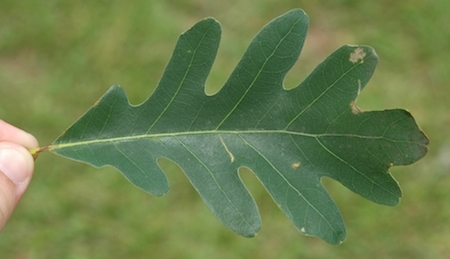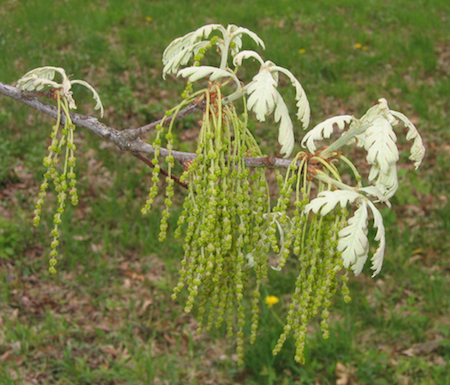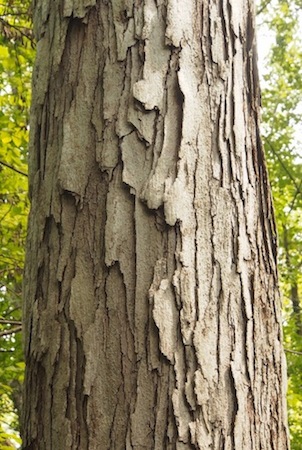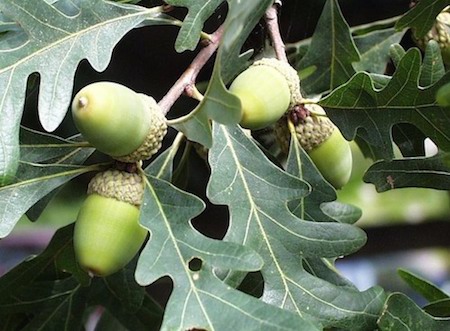White Oak
Specifications
- Latin (scientific) name: Quercus alba. Alba is Latin for white.
- Life expectancy: 600 years if left undisturbed
- Height: 138 feet
- Circumference: 14-1/2 feet
-
The height and circumference measurements listed above are for the largest-known white oak tree in Atlanta. This particular tree is located at the Bitsy Grant Tennis Center near Northside Drive and Collier Road.
-
Special characteristics:
White oaks are some of the most majestic trees in Atlanta.
A mature white oak has noticeable flaky (exfoliating) bark as you look up the trunk. It looks somewhat like roof shingles laid on top of each other. Some people get concerned and think the tree is diseased when they see pieces of bark lying on the ground. It's not. Bark fragments don't usually represent a problem, but rather are a particularly interesting feature of this species.
White oak wood is extremely strong and has a lovely architecture which is highly desired by people who appreciate the natural beauty of trees. When the leaves first flush out in spring, they are reddish-pink. While the leaves are young and tender, the new growth contains a natural chemical that repels leaf-eating insects.
Notice that the leaf of the white oak has rounded lobes (fingers), as opposed to the pointed lobes of the red oak leaf.
-
Annoyance factors:
Acorns: Acorns are produced each year. They are large (1-1/4 inches [32mm] long), and make for a lot of ground litter in the fall. The yield varies from year to year. Acorns make a lot of noise when they fall on the roof, and can sting if they hit your head.
White oak trees generally do not drop large amounts of wood. Dead branches often stay on the tree for long periods of time before they fall.
-
Fun Facts:
Why do white oak trees have flaky bark? It’s a strategy for forest fire survival. When forest fires sweep through, the flaky bark catches fire and quickly falls off, leaving the more sensitive trunk unscathed.
White oak acorns are the most edible of all the acorns because they don't contain the high amount of bitter-flavored tannin found in other acorns. These acorns were especially esteemed by the Cherokee native Americans. You can boil them like peanuts (always remove the shell first). You can also roast, grind, and stir together with whole wheat flour in a 1:3 mixture to make a unique tasting bread that is highly nutritious. White oak acorns are a prime source of food for deer, birds, and squirrels.
-
Photo Credits:
Leaf: Chris Evans, Illinois Wildlife Action Plan
Acorns: Paul Wray, Iowa State University
Bark and flowers: Peter Jenkins, TreeInspection.com




